I don’t do well at TripAdvisor tourist attractions. The throng that pushes past you for snapshots, the tour guide waving a skinny flag and speaking into a handheld mic – they overwhelm me. The scene in front of me should be breathtaking, but I am short of breath, an intense desire welling up in me to escape. Yet, there is nothing else to do except take over-replicated photo standards. I am a fly hopping, unsettled, from attraction to attraction, hoping to capture the best on camera then move on. In reality, however, I wish I was a sponge, keeping still and slowly letting the country seep into me instead – the words, the culture, the people.
I felt somewhat successful at this, curled up in a corner of a wooden bench, howling winds hurling around our tiny refugio perched 2250 metres atop the Dolomite mountain range. The table was strewn with my first Italian English book “In Other Words” by Jhumpa Lahiri, a Fodor’s “Italian for Travelers” handbook and a variety of coloured markers I used for scribbling translations in the margins. This trip to Italy I determined to be different from my other voyeuristic travels and so, dedicated myself to the task of learning Italian, planning an itinerary that would take us through the backroads, the lesser-known parts of this country.
As our itinerary unfolded, I found myself falling more in love with Italy’s rustic charm. Behind the Dolce and Gabbana glamour of Milan or the magnificent Colosseum of Rome was hidden the authentic Italy: sleepy Assisi, medieval Bologna, and the stout olive trees lined row upon row upon row. Here is a quick run-down of the not so well known parts of Italy, bypassing the typical towns of Rome, Florence and Venice and diving straight into where I uncovered some of this country’s greatest gems.
-
The Amalfi Coast and its surrounding coastal towns
Instead of shoring up in the costly hotels of Amalfi, Sorrento or Positano, we booked an AirBnB accommodation along the winding roads of the coast: a rectangular building of plaster walls and bright blue shutters perched atop rock overlooking the sea. Upon recommendation of our local host, we discovered a beautiful pizzeria tucked away in the narrow tunnels within the Duomo, the centrepiece of Amalfi. Wandering in non-linear fashion, we headed towards Donna Stella Pizzeria, where we sat down to thin-crust pizza served on an open-air terrace with a roof of creeping vines, hanging heavy with ripe lemons. Amalfi is infamous for its lemons; its fruit stands proudly display lemons of gargantuan size and bottles of limoncello, a lemon liquor produced in Southern Italy, line any basic storefront. The best lemon cake I tasted was at a little family-run cafe, strategically located on the Ville delle Ferriere. This is a hike through the paper mill ruins that dot the natural reserves that surround the town. Paired with homemade elderberry tea, the cake was light, spongy with lemon undertones and we savoured the combination while watching sweaty hikers pass us by.
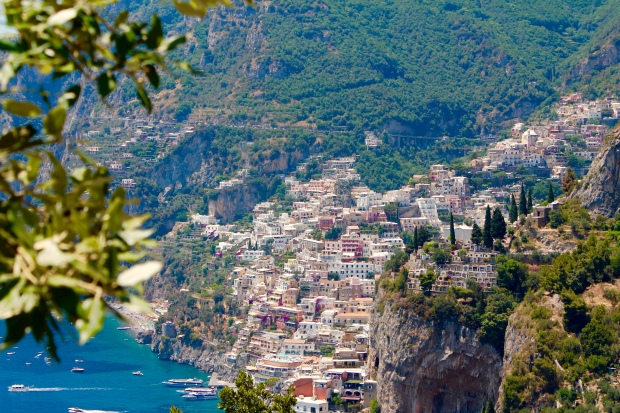
If Ravello were the sibling of Amalfi, it would be the charming but shy younger sister. It was less populated with tourists, and we were able to wander its cobblestone streets with the only interruption being processions of wedding guests making their way to Villa Cimbrone, where an elaborate, traditional Italian wedding was taking place that evening. With its manicured hedges, towering umbrella trees and majestic views, this garden seemed to be cloistered away, untouched by the realities of daily life. Ravello was also where we experienced a touch of Southern Italian hospitality over our dinner at Cumpa Cosimo. In addition to the delicious pasta sampler and mushroom fettucini (from which I learned the real definition of ‘al dente’) we ordered, the waiters, and even the Mama of the family business, would dish out free samples from the kitchen: cut up slices of Pizza Margherita, meatballs, and even my favourite tiramisu to end.
The towns of Praiano and Positano are bridged by the infamous “Path of the Gods” or “Sentiero degli Dei”. Although suggested by multiple blogs and tourist guides as a “must-do”, by setting out early in the morning, we avoided the crowds, and were able to enjoy the stunning views of the cliffside towns hanging precariously over the dazzling waters almost the entire course of the hike. The entire hike took us about four hours, including a brutal climb of steep stone that could be avoided if one chose Nocelle instead of Praiano as the starting point. I spent the rest of the afternoon floating in the clear, sparkling waters of Positano and picking the smoothest pebbles from its unique basalt-colored beach.
-
Umbria
When one thinks of rural Italy, often the regions of Umbria and Tuscany immediately come to mind, conjuring images of rolling hills, vineyards and olive oil. Yet, unlike its more sophisticated and popular neighbour, Umbria is down-to-earth, simple, and perhaps more genuine. Our first encounter with Umbria, after driving north from the Amalfi Coast, was in the town of Spoleto with our AirBnB host, Nunzio. He didn’t speak any English, so as the member who had taught myself Italian the past 4 months, I was our family’s representative to communicate in my broken Italian littered with verbs in the wrong tense.
“Ecco la cucina,” Nunzio gestures with his hand, and turns to me for translation. “The kitchen,” I fill in for my family.
His speech was slow, measured, and his smile warm, slightly abashed at his lack of English. His apartment was fully equipped with everything from personal bathrobes to shower caps, proof of the genuine hospitality that characterises the Umbrian people.
Wandering around the towns of Spoleto and Assisi, I felt entranced, drawn into the magic of Umbria. The architecture looked like a scene from the Disney movie “Enchanted” with its high arches connecting walls of sand-colored brick. The occasional Francescan monk, dressed in the simple hooded dark vestiture, would pass us, making me feel like I was an anachronism, the one strangely out of place. Each Umbrian town has a few main attractions; Spoleto’s famous sight is the Rocca Albornoz, the papal fortress towering over the city, and Assisi has the iconic Basilica di San Francesco, where St. Francis of Assisi is buried. But, to be honest, the best way to truly experience these cities is to wander with no particular aim in mind, soaking in the leisurely pace of life the Umbrians enjoy.
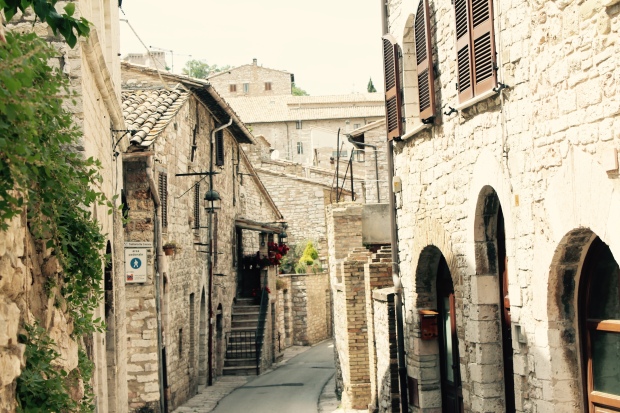
While Tuscany developed under the influence of the Medici family and thus carries undertones of wealth and fame, Umbria’s heroes were Catholic saints, those who left their lives of comfort for the simple life, wandering through the mountainous districts of Umbria, cheerful and full of song. As I myself wandered through its sleepy towns, I recited aloud a quote by St. Francis, letting the truth of the words sink deep into my soul: Remember that when you leave this earth, you can take nothing that you have received…but only what you have given; a full heart enriched by honest service, love, sacrifice and courage.
-
Tuscany
One of the best ways to experience this region known for its agricultural success is by staying in an agriturismo, a farmhouse-turned-hotel. Ours was nestled in the hills of Chianti, a region recognised for its olive oil groves and vineyards. A series of steep switchbacks up the Tuscan hills led us to Il Giardino – and a terrace with a panoramic view of the countryside where one can enjoy wine while watching the sun descend into the undulating hills.
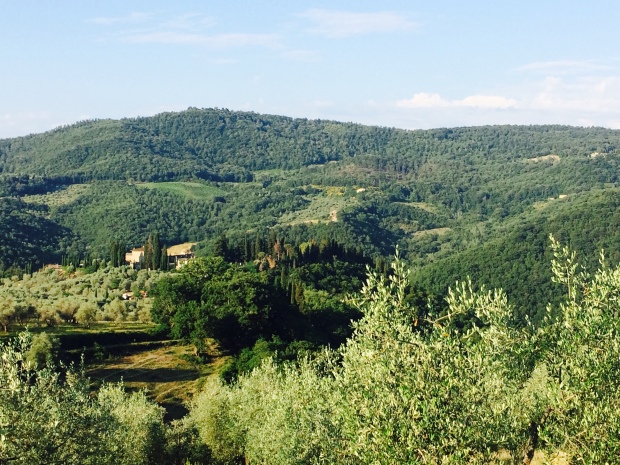
This is where Italians – and tourists who are in on this secret – escape to the countryside in search of la dolce vita, directly translated as “the sweet life”. One could participate in the various activities organised by the agriturismo, ranging from olive oil grove tours to cooking classes, or simply spend all day sun-basking on deck chairs by the pool. Whatever you decide, the goal is to have an authentic Italian experience with the locals in the country.
True to their reputation, Italians love their food, and agriturismos are known for serving up the best, local fare. Dinner is not so much about getting full, as it is about savouring the sight, smell and texture of food, while sharing in a joke with loved ones around the table. As such, dinner is a long drawn-out affair with four courses separated by at least 20 – 30 minutes of waiting time in between each course. As a family that usually finishes dinner in a swift 20 minutes, the long waiting times made us wonder if the kitchen had in fact entirely forgotten about us. Needless to say, the resultant two hour dinner was our induction to our authentic Italian experience.
To start off, the antipasti was bruschetta topped with four different types of tartare and a platter of cold hams and local cheeses. The primo piatto, usually a type of rice or pasta, was tagliatelle with a bolognais sauce and when we thought we were full, the secondo piatto emerged: an extensive display of grilled meats, accompanied by fresh salad and side fries. We ended the meal with dolci – vanilla ice-cream and raisin cookies. I ordered a cafe latte to pair with my dessert, only to learn later that Italians always end with an espresso as milk coats the tongue, taking away from the full appreciation of the beauty that is the meal.
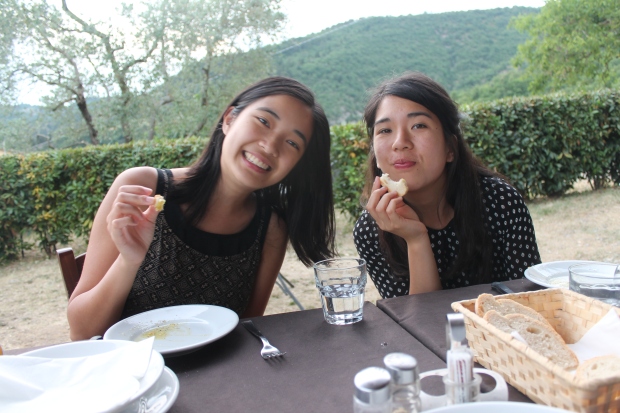
“Anda a Firenze,” my foreigner status became even more apparent when I attempted to converse in Italian with Gabrio, the cook who had asked us how the meal was. Gabrio was born and raised in the Tuscan hills, the agriturismo a family business that was passed down to him and his brother, who were also in charge of running the olive oil factory during the busy harvest months of October to December when private olive grove owners flock to their factory to get their olives pressed. He leaned his tall, dark frame against the table, “Anda – that’s not an Italian word,” he gently corrected with a chuckle.
My faux-pas didn’t stop me from trying out more of my Italian, however, and the next day I found myself pouring water from buckets into troughs as I learned the Italian names of each animal – oca (goose), maiale (pig). I stumbled through my infantile Italian: “Here?” “Water…inside?” The one thing I knew she wanted me to do, at least, was pull out armfuls of hay and strew it across the animal pens for their lunch. I knew I was more of an obstacle to an otherwise efficient process, but Dorina, with her sure, strong hands of a farm girl and her tanned face framed with brusquely-cut thick, brown hair, was patient with me. “Pomeriggio” she corrected me, as I tried to ask her what she will be doing this afternoon but may have used the word “tomato” in place of “afternoon”. “Busy,” she answered, “We have a pizza dinner, so cooking, making the dough.”
It was humbling, learning to step out and most likely, make a mistake. But in the process, I was able to connect with the heart of Italy: the locals who pressed their own olives, made their own pizza dough and truly lived and worked the ground
-
The Dolomites
I fell asleep on the drive from Tuscany north to the Dolomites, the section of the Alps clustered around the north-eastern end of Italy. When I awoke, the rolling Tuscan hills had been replaced by sheer rock face, the ash-grey structures rising majestically out of the ground and dwarfing the road that snaked deftly around them. Our first stop was in the German-speaking town of Montan; I was no longer in the heart, but at the boundary of intersecting cultures.
“I’m a mix of German, Italian, French and English,” the son of our AirBnB host introduced himself, explaining his icy-blue eyes and shock of golden hair. It was as if I had stepped into another country altogether.
The food was heartier; instead of thin-crust pizza and fettucine, we were served casunzei, small folded pasta packets with either a white (potatoes and herbs) or red (beet) filling, and canerdeli, large, plump dumplings stuffed with speck (dry, smoked ham). Of course, the locals maintain their willowy figure by working off all those calories running the Alpine trails as morning exercise.
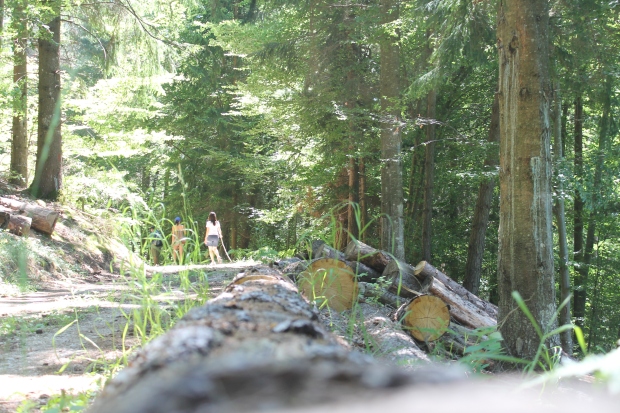
To truly understand what the Dolomites is, you have to spend a few days doing what the thru-hikers do. The Alta Via is a challenging 12-day hike through the steppes of the mountain range and experienced hikers, or those looking for a rugged adventure, follow the trail for the breathtaking landscape, stopping to rest for the night at mountain huts called refugios. So, in search of our Dolomite adventure, we booked two nights at Refugio Scoiattoli, one accessible only by chair-lift and foot. Perched on the peaks in which World War One was fought between the Italian and Austria-Hungarian troops, Scoiattoli is truly a gem hidden in the crevasse. We had originally tried to stay at its more popular but overbooked neighbour, Rifugio Lagazuoi, that had the title of ‘highest rifugio in the Dolomites’, but as the four-wheel drive rounded the corner, we knew this quaint wooden cabin dwarfed on all sides by the looming grey rock had captured our heart.
It was surreal. We tried taking photos from all angles, yet each photo was a botched attempt at capturing the beauty only the eyewitness could comprehend. It seemed the only appropriate thing to do was curl up on a bench and stare out the window, trying my best to absorb the grandeur of it all.
Upon recommendation of the other four lodgers who were in the middle of their Alta Via journey, we rode a chairlift up to Lagazuoi the next day for panoramic views of the Trentino Alto Adige range, and a steep descent down through the World War One tunnels that penetrated a maze through the heart of the mountain. A sign over the tunnel entrance warned us we would need a headlamp, helmet and boots, but we ventured in anyways with hiking sandals, BlueJay caps and iPhone flashlights. 500 meters of dark stairs later, we emerged into the sunlight victorious, with a slightly bruised ankle and a much deeper appreciation of our soldiers.
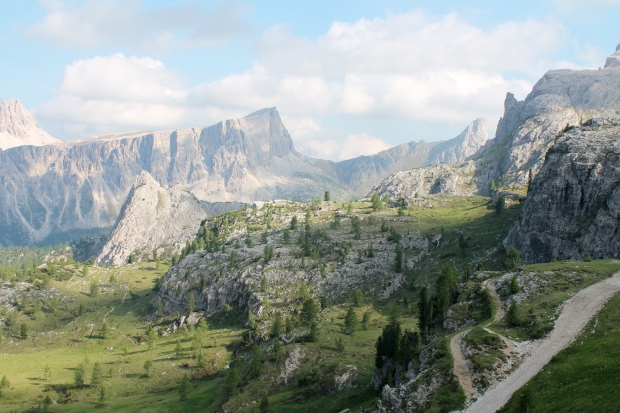
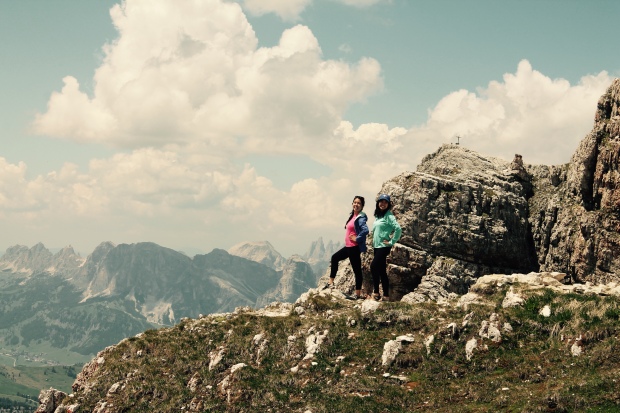
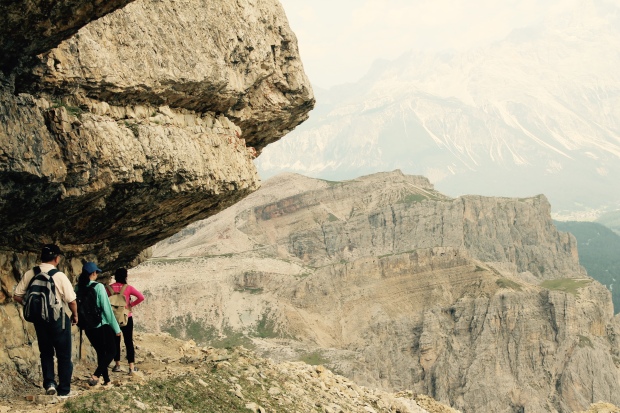
There was a plethora of hikes to do from our refugio, including the via ferrata, in which you use harnesses and pulleys to pull yourself up the rock face. We only had the strength for one this trip, but my sister and I were determined to conquer the Alta Via together at some point in the future. This was not going to be the last we would see of the Dolomites.
-
Italian cuisine
A piece on Italy’s hidden gems would not be complete without a section on its cuisine. Italians pride themselves on their food. In Italy, I finally understood what al dente meant, and that gnocchi can actually melt in your mouth. They have a concept called “abbinamento”, which means the way things go together: which wine pairs with which food, which pasta shape with which sauce. Everything is detailed, calculated, done with an eye for beauty. One must eat with the season and location, so that the food is always fresh. In Sicily, eat fish; in Bologna, eat ragu; but everywhere and anytime, use olive oil.
Here are three of my favourite eating experiences from the trip:
a) Osteria dell’Orsa (Via Mentana 1, Bologna)
We stumbled upon this hole-in-the-wall shop while perusing the streets of the Quadrilatero, the gastronome epicentre of the nation’s food capital. Drawn in by the buzzing atmosphere and the overworked waiters (always a sign of a good restaurant), we stopped in here for a quick lunch, only to discover that this was a local’s favourite. If you don’t mind being squeezed onto a long cafeteria bench and talking over the din of lunch chatter, the food is second-to-none. We ordered the tagliatelle al ragu Bologna is known for, ravioli with pesto (which my sister claimed is the best ravioli she has ever eaten) and a “piatti unico” of couscous paired with brie topped with apple jelly and pate. With unbelievably cheap prices, this meal came up often as our standard of comparison during the rest of our trip.
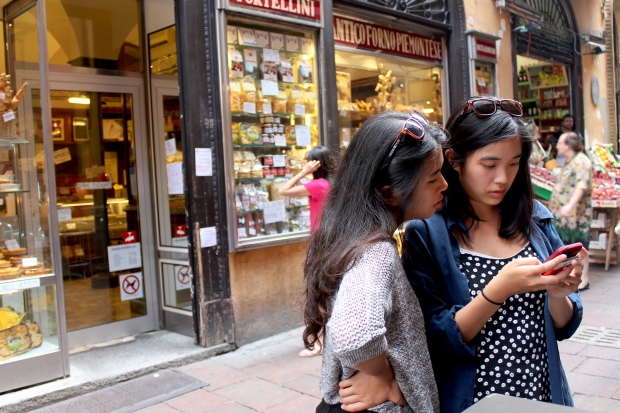
My sister and I (unsuccessfully) trying to find a place for lunch in the Quadrilatero, which ended up being a good thing!
b) Ristorante Pizzeria Il Timone (Via Olivo 29, Porto Venere)
It was my second time to the beautiful but over-photographed Cinque Terre and my family was in desperate need of escaping somewhere isolated. Our AirBnB host in La Spezia suggested we head to Porto Venere, a town sequestered from the others but no less charming. We were not disappointed. The sun was just setting on the harbour, glinting off the lines of docked boats and highlighting the sweet pastel colours of the stacked shophouses. Known for the local Ligurian cuisine, Il Timone’s menu consisted of anchovies, focaccia with various toppings, farinata (a chickpea flour pancake) and traditional Italian fare in combination with all sorts of seafood. Surprisingly, the appetiser of anchovies which were preserved with salt, then fried and served with garlic and lemon juice, was our favourite, the tanginess juxtaposed against the taste of the sea.
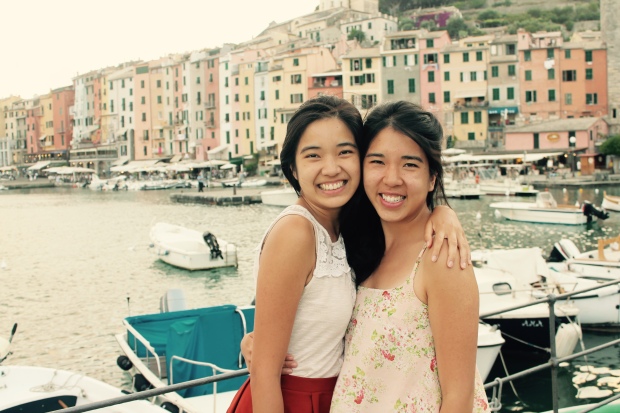
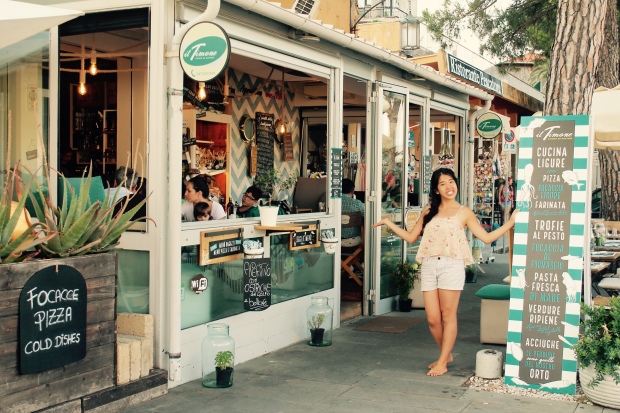
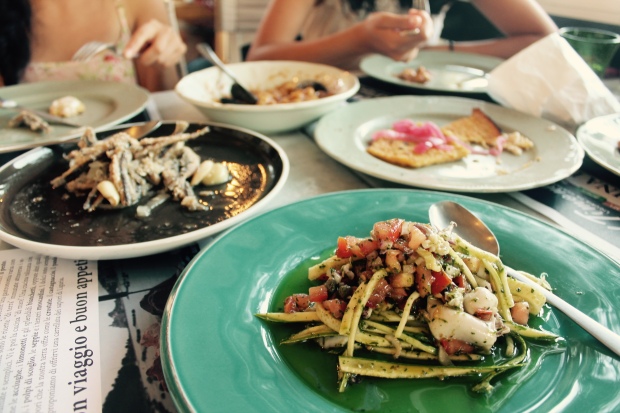
c) La Taverna dei Fori Imperiali (Via della Madonna Dei Monti 9, Rome)
So, this place is not exactly hidden, but it had to make it on my list of favourite eats. It was the most highly rated place near our next destination, the Colosseum, and so we joined the ranks of excited tourists to sample their food. I loved my order of onion soup, warm and dark with a covering of melted cheese, as well as the bites I had of my dad’s bacon-wrapped lamb. But, the best was probably my mom’s sweet and sour eggplant and crispy artichokes, char-grilled to perfection. I never knew vegetables could taste so good.
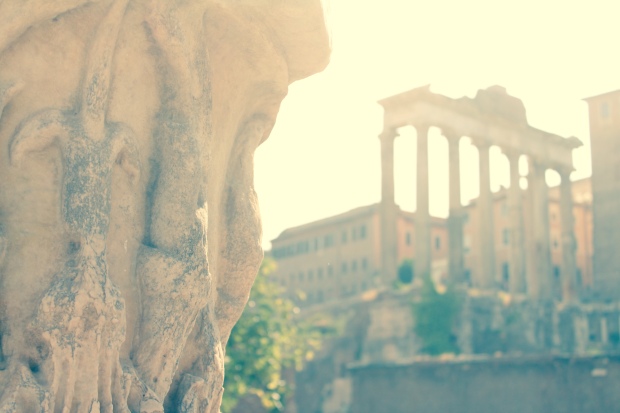
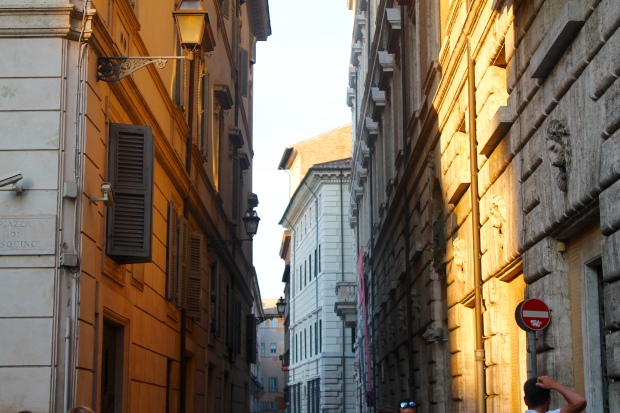
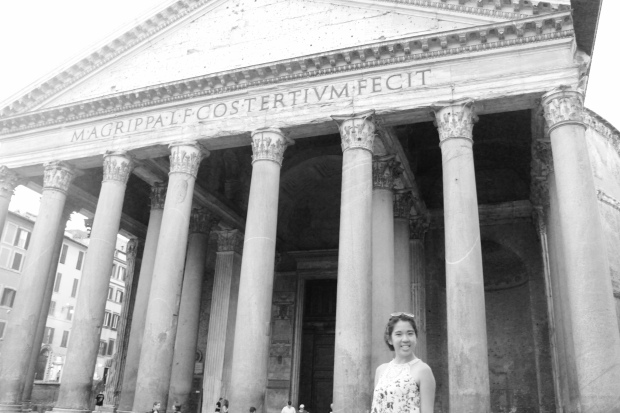
“Italy has everything!” my dad commented as we shared our last thoughts on the country. I agreed. From the dusty roads cut into mountain of the Amalfi Coast to sleepy Umbria with its ancient architecture to the rolling Tuscan hills canvased with olive oil groves, the towering majesty of the Dolomites, the pastels of Cinque Terre and finally the ancient marble and basalt cobble of Rome, Italy has it all.
It was time to go, but I didn’t want to say goodbye without knowing when the next time I would return to this beautiful land would be. But, I was grateful that in Italian, the greeting for departure and arrival is identical. I guess in Italy, you never have to say goodbye.
Until next time we meet.
Ciao, Italia.